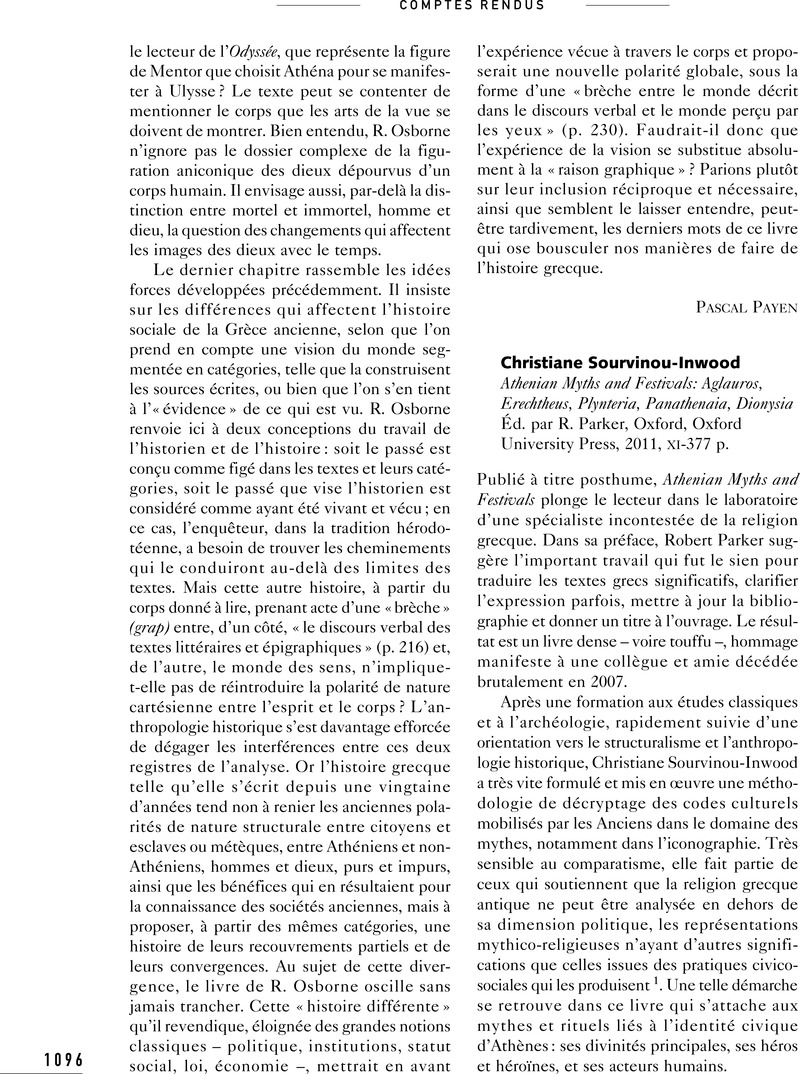No CrossRef data available.
Published online by Cambridge University Press: 20 January 2017

1- À cet égard, voir son article de référence sur la religion grecque : « Qu’est-ce que la religion de la polis ? », in Murray, O. et Price, S. (dir.), La cité grecque d’Homère à Alexandre, trad. par F. Regnot, Paris, La Découverte, [1990] 1992, p. 335–366 Google Scholar ; ainsi que ses réflexions sur le comparatisme et l’histoire grecque ancienne : « Male and Female, Public and Private, Ancient and Modern », in Reeder, E. D. (éd.), Pandora: Women in Classical Greece, Baltimore/Princeton, The Walters Art Gallery/Princeton University Press, 1995, p. 111–120 Google Scholar. Sur sa méthode, voir Reading Greek Death: To the End of the Classical Period, Oxford, Clarendon Press, 1995, et particulièrement p. 443-444.
2- Lambert, Stephen D., « The Attic Genos Bakchiadai and the City Dionysia », Historia: Zeits- chrift für Alte Geschichte, 42-4, 1998, p. 394–403.Google Scholar